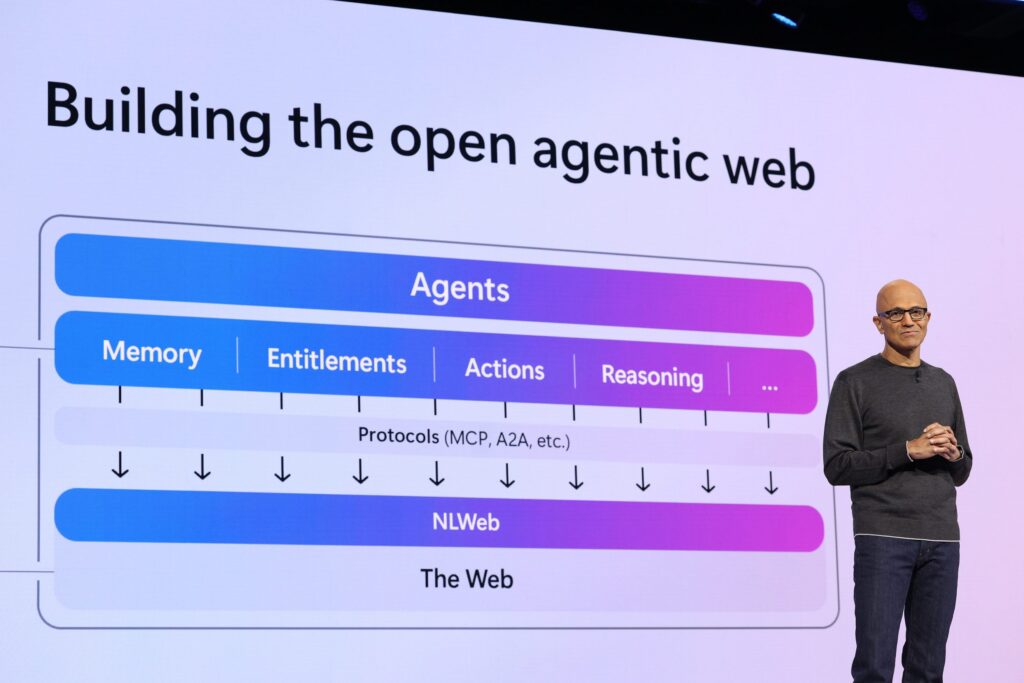
Microsoft Discovery: Agentic AI for Faster R&D Innovation
Microsoft is pushing research and innovation into a new era. At Build 2025, the company introduced Microsoft Discovery, a powerful new agentic AI platform.
It aims to help scientists and engineers achieve breakthroughs faster. Connects tools, models, data, and workflows into one intelligent system. It supports real-world scientific challenges. It also improves product development speed using automation and reasoning. Microsoft Discovery represents a clear shift.
AI is no longer just a helper. It is now a full-on AI agent for scientific research, and it works with structured lab data. It also learns from unstructured material, can reason, experiment, and explain its findings.
This article explains how Microsoft Discovery works, why it matters for R&D, and the opportunities ahead.
Why Microsoft Discovery matters for R&D today
Research and development move more slowly than needed. Many industries face huge delays. This includes biomedicine, energy, manufacturing, and climate science.
Today’s scientific workflows remain scattered. Tools rarely talk to each other. Data often sits in closed systems. Many experiments take months to complete. Errors delay progress and increase costs.
Microsoft believes this is fixable.
They see artificial intelligence, scientific discovery, and product innovation as the next frontier. AI can search literature, it can plan experiments, run simulations, monitor processes, and even suggest better solutions. When all this happens in one place, innovation speeds up. That is the promise of the Microsoft Discovery platform.
What is Microsoft Discovery?
Microsoft Discovery is a science-focused Microsoft Agentic Platform built on Azure.
It serves as a central repository for R&D data, models, and tools. Connects everything inside a company’s research environment. The Discovery also connects external knowledge sources, orchestrates workflows, handles compliance, ensures security, and encourages smarter collaboration.
At the core of Microsoft Discovery lies agentic AI. These AI agents think, plan, and act. They follow scientific methods and make sense of complex findings. Adjust their approach when conditions change, and work side by side with humans. They support decisions instead of replacing expertise.
Microsoft Discovery works across industries:
- Pharmaceuticals and life sciences
- Energy and green technology
- Aerospace and materials science
- Manufacturing and robotics
- Agriculture and food technology
- Climate and environmental studies
Each field depends on fast, accurate discovery. Microsoft wants to give each field a major boost.
Key capabilities that power faster scientific breakthroughs
Microsoft Discovery includes several impressive features. Each supports better R&D outcomes.
Unified scientific data
Large research companies generate vast amounts of data. This data is complex. It is also scattered across silos. Microsoft Discovery unifies data sources. It ensures access through governed structures. Researchers can search, combine, and analyse results faster. Errors from data fragmentation reduce significantly.
Integration with Azure and open ecosystems
Microsoft Discovery runs on Microsoft Azure services. It supports private models and open-source models. It supports partner tools, such as chemistry engines or biology databases. Teams can plug in their own lab equipment and software. This flexibility matters. No two research labs look the same.
Agentic automation across workflows
The Microsoft AI agent platform manages full project cycles. It reads scientific papers, extracts insights, plans experiments, and runs simulations. It records results, suggests next steps, and flags risks early. These agents request clarifications, revise goals, and clearly explain decisions while supporting compliance at every stage.
Simulation-driven science
Real-world experiments cost money and time. Virtual experiments reduce complexity. Microsoft Discovery includes high-performance simulation support. It can test thousands of scenarios and evaluate safety impacts. It can run “what if” analyses before a single lab test starts.
Collaboration and governance
Microsoft Discovery encourages secure teamwork. It supports version control, documents reasoning, tracks experiment chains, and protects sensitive IP. Researchers across locations work together without friction. This is a true scientific AI discovery platform for organisations of any scale.
How Microsoft Discovery works
Microsoft demonstrated a simple flow at Build 2025. A researcher provides a challenge. The system searches existing literature. It highlights useful models and processes, creates a project plan, designs experiments, and explains its choices. It updates the plan as new data arrives.
A quick example use case
A pharmaceutical scientist asks: “Find a stronger and safer compound for a heart medication.”
Microsoft Discovery will:
- Review known compounds and safety studies.
- Suggest potential molecule combinations.
- Simulate reaction behaviour.
- Recommend lab experiments with the best chance of success.
- Monitor real-world results and identify issues.
- Propose improvements with reasons and evidence.
Instead of years of trial and error, the team gets faster guidance. They take fewer risks. They learn more from each experiment.
Where Microsoft Discovery will create the biggest impact
Agentic AI will transform how companies solve challenges.
- Drug development: Drug discovery currently takes over ten years. Microsoft Discovery can shorten that journey. Researchers reach safe results faster. Lives change sooner.
- Materials innovation: Better metals and composites lead to lighter planes. They improve battery storage. They support greener buildings. AI agents help find the right structure quickly.
- Clean energy research: Wind, hydrogen, and solar require constant improvement. Microsoft Discovery optimises materials, efficiency, and scaling.
- Advanced manufacturing: Factories need durability and low waste. AI helps evaluate new processes in both virtual and real environments.
- Climate solutions: Climate research needs rapid analysis. AI can model environmental behaviour and test interventions responsibly.
These benefits explain why Microsoft calls this a major leap for R&D.
Microsoft’s bigger vision: AI-driven innovation everywhere
Microsoft has invested heavily in AI for knowledge work. They built Copilot for productivity. Now they want to empower discovery. The Microsoft Discovery program is part of a long-term plan.
They want AI to support every role, a technology that drives responsible innovation, and a set of ideas that can be turned into products faster. They want safer and cleaner technology.
But Microsoft recognises a key truth.
AI cannot replace human intuition. It supports human decisions. Humans remain responsible for judgment and ethics. Microsoft says transparency is essential. Audit trails are built in. Organisations keep control over their own science.
Who benefits from Microsoft Discovery?
Microsoft Discovery creates value at every step of innovation. Each group involved in research sees clear and measurable gains.
| Audience | How they benefit |
| Researchers | Gain faster and more reliable insights for every experiment. |
| Product development teams | Reduce delays and reach working solutions quicker. |
| Compliance and regulatory teams | Track decisions clearly and maintain audit-ready records. |
| Business leaders | See stronger returns and reduced innovation risks. |
| Customers and end-users | Receive safer and more effective products sooner. |
Better collaboration leads to better science, and better science ultimately improves lives.
Challenges and the road ahead for agentic AI in science
Microsoft Discovery arrives during a time of change. Many research teams continue to face data gaps and outdated equipment. Skills shortages also slow digital adoption.
Ethical and safety rules demand strong oversight. Cybersecurity threats continue to rise within research networks. Agentic AI can help overcome these issues. Fully automated labs could run experiments with higher accuracy. AI may predict failures before they happen. Researchers could model complex ecosystems in virtual space. New ideas could reach the market faster.
Global collaboration may become smoother. Microsoft plans to support every organisation as they transition to this future. Better tools, better science, and better outcomes feel within reach.

Distilled
Microsoft Discovery gives scientific teams a new superpower. It brings intelligence to every lab process, supports safer experiments, improves quality, reduces waste, accelerates discovery, encourages collaboration, and eliminates friction from data silos and outdated tools. Agentic AI is stepping up.
Serves as an active partner for humans, learns and reasons like a colleague, adapts to real-world problems, and turns knowledge into action. Microsoft Discovery could become a core AI platform for R&D in many industries. It could guide the next leap in medicine, materials, and sustainability. It might redefine the speed of innovation for the entire world. The future of research feels closer now. And Microsoft wants that future to be powered by responsible AI.